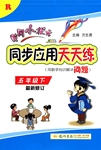题目内容
Protection Publications
Consume Health: A Guide To Intelligent Decisions Eight softcover edition of leading college text covering all aspects of basic health strategy for consumers. This new edition of the most comprehensive text available in the field continues to provide a vast amount of information to enable consumers to make wise choices regarding health products and services. By Stephen Barrett. 608 pages, $23.00 |
Chiropractic(手疗法): The Greatest False Warning Of The Century? L. A. Chotkowski describes discoveries made during his half-century of medical practice. It includes reports of cases; the author’s observations at New Chiropractic College, a chiropractic office, and a chiropractic lecture; and details of critical reports in the media. Second edition, softcover, 209 pages, $15. |
The Whole Tooth The fundamental guide to protecting your dental health and your pocketbook. It covers preventive care, finding a good dentist, dental restoring, cosmetic dentistry, dental quackery(治疗)and fraud(假牙),and dental insurance programs, including managed care. By Marvin J. Schissel, and John E. Dodes. Softcovr, 284 pages, $10. |
Quackery And You The 32-page softcover brochure with special viewpoints by William Jarvis, Ph. D. , suitable for waiting rooms. $1. |
To above prices, please add $3 for the first book and $1 for each additional book for postage & handing. Foreign countries add $5 per book. Send orders to Quackwatch, P. O. Box 1747, Allen Avenue, NY 18105. The checks must be in US dollars. We cannot process credit card orders. Please use our order form from amazon.com and you can get more information from it.
1.A Canadian wants to buy all the four books and he should pay__________.
A. $69 in all B. $49 in total
C. by credit card D. in Canadian dollars
2.From the text, we learn that______________.
A. The means of cover packing of the books are different
B. Quackery and You is designed for those waiting to see the doctor
C. Consumer Health includes much information on critical reports
D. L. A. Chotkowski provides you with all of your dental needs
3.What can you do to search for more information about the books?
A. Buy the brochure B. Write to the author
C. Telephone the sellers D. Visit amazon.com
 开心试卷期末冲刺100分系列答案
开心试卷期末冲刺100分系列答案 双基同步导航训练系列答案
双基同步导航训练系列答案 黄冈小状元同步计算天天练系列答案
黄冈小状元同步计算天天练系列答案
